Cable Controversies: A Recent Review and Promotion
I continue to be bombarded — and angered — with bogus cable reviews, audiophile FB group posts and comments about the merits of cables, and newsletters announcing special promotional offers from cable vendors. It’s crazy how much attention — and controversy — discussions of cables produce in our audiophile community. If you’re a long time reader of this blog, you already know my position. But for those who have recently found their way to this site, let me state as emphatically as possible that cables should not be used to “tune” or “color” your system. That’s not their job! And spending crazy amounts of money on designer cables because they may look cool is money that could be better spent on acoustic treatments or a professional calibration session.
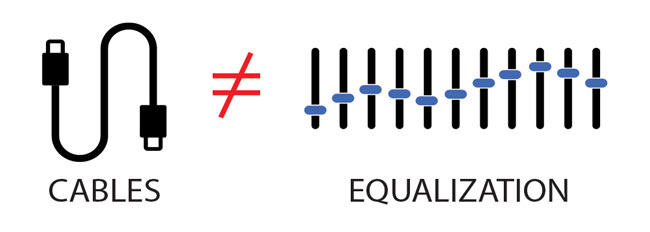
A Crazy Cable Review
I feel compelled to enter the cable fray once again because of a review I read on the hifiplus.com website posted July 28, 2020. The review, authored by Alan Sircom, focuses on Synergistic Research’s Foundation Series cables. Feel free to read the review for yourself as an introduction to the kind of nonsense uniformed reviewers feel compelled to write when they actually have nothing to say about products that have no merit from high-end cable companies. I’ll share only a couple of quotes from the review to support my case. Here’s my favorite line:
“A good vocal is projected – but not ‘pushed’ – into the room and neatly delineated from the rest of the band, with a coherence, stage presence, and microdynamic precision that makes the band sound like a band, not simply a collection of musicians vaguely playing together and never once falling foul of the ‘audiophile disease’ of making a huge soundstage at the expense of the cohesiveness of musicians in that mix.”
This single sentence is admittedly poetic and elegant prose but absolutely meaningless if providing useful information to an interested audiophile is important in a product review. As a musician, mixing and mastering engineer, composer, computer scientist, record producer, former maintenance technician, and studio designer, I feel reasonably well-equipped when it comes to describing the aesthetic and technical aspects of sound — especially music mixes. I was a mastering engineer for 16 years and am responsible for the release versions of albums from Bad Company, Kiss, The Allman Brothers, the SFO, and all of my AIX Records releases. I handled the technical/aesthetic discussion with clients pretty well. So imagine my confusion when encountering the description above. I have no clue what aspect of an electrical or acoustic signal is responsible for “microdynamic precision.” Googling the term didn’t help either. There is a company called Precision MicroDynamics in Canada that manufacturers “high-performance motion control data acquisition hardware.” I don’t think that was what Alan was referring to.
Likewise, a Wiktionary definition wasn’t much better: very small-scale dynamics. I could have guessed that. Apparently, the SR Foundation series cables are claimed to enhance or make more perceptible “very small-scale dynamics” in a music selection. The objective half of my brain has to ask how? Is the cable doing some sort of signal processing to expand or modify the signal-to-noise ratio? Doubtful. Actually, impossible. The Foundation Series might be nicely built interconnects or speaker wires but I can’t imagine they’re capable of actively changing the signal it delivers. And I don’t think even SR would claim that these cables do change the signal. Remember the job of a cable to to deliver an analog or digital signal without change or loss.
Other terms contained in the review are equally dubious. How do we measure “coherence” and “stage presence” (isn’t this term more related to a person’s charisma)?
Cable Comments
Comments following cable reviews tilt in one of only two directions. If you take an engineering or technical tack and attempt to explain the engineering realities behind cables you’re labeled a “troll,” “cable denier,” or “non-believer.” If you accept the nonsensical musings of the author of the review and buy into the lexicon presented above, you’re a “true” audiophile and quickly come to the defense of the writer and the company responsible for the silly expensive cables. I’m confident some readers will comment on one side or the other below.
After a couple of comments like this from a electrical engineer and experienced audiophile:
“You seem to be sucked up in the Quantum Tunnel, and have bought into the whole Synergistic Research farce. Shame. Common sense can’t always win over nonsense. Perhaps I can interest you in some audiophile paint?”
A typical response immediately pops up from someone who claims to have spent over 20 years in the business (most likely in the sales and marketing side):
“Well done Alan. I see the cable deniers are here lol. The lack of knowledge here must drive you batty sometimes…hahahaha.”
I’m left wondering what knowledge is lacking when you get a review full of outlandish claims, unsupported claims, and pseudoscience? Where’s the knowledge or technical part of the review. Alan simply spews the company line, rolls out the same tired descriptions, accepts the marketing nonsense provided by SR, and gets a couple of hundred dollars for writing the review. Presto, done. Imagine how long SR or other high-end cable companies would continue buying ads on the hifiplus.com site of any other site if the review skipped the hyperbole and provided some real engineering data or measurements? Would anyone buy a $600 set of RCA cables? Probably not. So it continues.
A Digital Cables Promotion from Down Under
A couple of days after reading and commenting on the website above, I received an email from Marc Rushton, the editor of StereoNet.au. The email linked to an article posted on August 1st, 2020 titled, “Elevate Your Digital Audio With Nordost Cables Offer.” Plain and simple, this is an advertisement for Nordost. I’m sure that the website is either getting a percentage of any order tracked through the promotion or a nice fat advertising payment. Nordost can afford it. This is not independent, informative audiophile journalism IMHO.
Right out of the box, Marc dismisses those of us who know better than to buy into the crazy claims of Nordost and other high-end cable companies. If you’re an electrical engineer, audio engineer, technically-minded individual, or simply a living, breathing human being, you might take offense at his opening paragraph.
“Let’s get straight to it – there are many non-believers when it comes to aftermarket cables. The snake-oil brigade will fight to the death claiming there are no audible differences and spend a lot of time chanting a mantra that probably equates to something along the lines of ‘It can’t be measured so it can’t be heard.'”
His use of the term “non-believers” is apt. Those that depend on faith over science, reason, and engineering to guide their audiophile purchases are justifiably targets for derision — and for the marketing campaigns of the cable companies. In this instance, I take some pride in being a “non-believer.” Believers — like “flat earthers” — refuse to accept that science and engineering has already figured out the passage of electrical signals through conductors. And actually, electrical signal can be measured!
He continues:
“Anyone fortunate enough to witness one of the many cable demonstrations that Nordost has held at local retailers or Hi-Fi Shows likely needs no convincing that cables sound different. Audible improvements as you move higher up through the Nordost range have included bass and vocal clarity, detail, and tonality. The many times I have attended these events, the decision has been unanimous.”
Here we go again. Using nonsensical and vague adjectives to hype cables that can cost as much as a small car (the Nordost ODIN 2 Digital Interconnect lists for over $11,000 for just a 1.25 meter!) seems to be the comfort zone of the uninformed. I have been fortunate enough to experience a Nordost demonstration at an audiophile trade show (in fact, I’ve attended quite a few). When I politely inquired of the presenter how a simple power cord could boost the volume by 2-3 dB or change the frequency response by adding more energy to the highs, the presenter noticeably balked as a questions like mine wasn’t in the script. He never provided an answer. Those doing trade show demos have their “spiel” well rehearsed. I’ve seen volume levels surreptitiously increased, I’ve seen different versions of the same demo track played from a custom CD, and other clever tricks that an unfamiliar audience probably wouldn’t notice. I’m not saying that every demo is rigged but when a demo defies science, there has to be a reason. The magician David Blaine seems to levitate in plain view in some of his videos. Does anyone actually believe that he can position himself 12 inches above the sidewalk?
If my livelihood depended on selling digital interconnects for over $10,000 (or any pricey cable), I would fine tune my sales pitch, too and probably be tempted to step over the integrity line to close a sale. But it is an undisputed fact that a power cord cannot and should not alter the output amplitude of an audio system. The incoming 120 volts and 60 Hz AC power is simply converted to the needed DC for the internal components of the device in question. And remember that the wire from the IEC connector inside the device to the power supply circuit board is normal 12-gauge stranded silver wire.
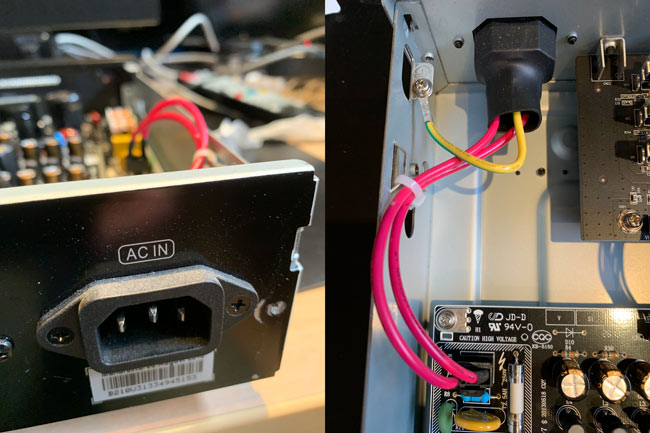
Imagine if NASA or SpaceX were counting on getting standard 120 V/60 Hz AC power from the wall to launch a rocket. If the expected power was somehow increased by 20%, there might present a problem. Designers of electrical equipment base their designs on getting the standard 120V/60 Hz from the power company.
Similarly, a $11,000 ODIN 2 Digital Interconnect cannot deliver the bitstream — the ones and zeros — from the S/P DIF output of my digital player to my Benchmark DAC3 any better than a Monoprice coax cable. And forget about claims of “ultra low jitter.” Clock is redone at the receiving end of a digital interconnect.
So when Marc makes a statement like:
“Just like rolling tubes, all cables exhibit different sound characteristics, and while there is no hard formula for what cables work best with different brands and types of products, trialling different cables can be an enjoyable and rewarding process. It allows listeners the opportunity to fine-tune their systems for their sound preference.”
This is absolutely untrue! Using cables to “fine-tune” an audio system is crazy! Experienced audio engineers and acousticians don’t adjust the sound of professional mastering studios with cables. We install specialized equalizers on all channels and hire acoustic experts to properly adjust these devices to “tune” the room. And we use standard Mogami, Belden, or Canare cable to hook everything up. The thought that anyone believes “trialling different cables” is appropriate advice would make me doubt the source of the information. Somebody once offered the following sage advice, “use the right tools for the right job in the right way.” This advice applies to setting up an audio system as well.
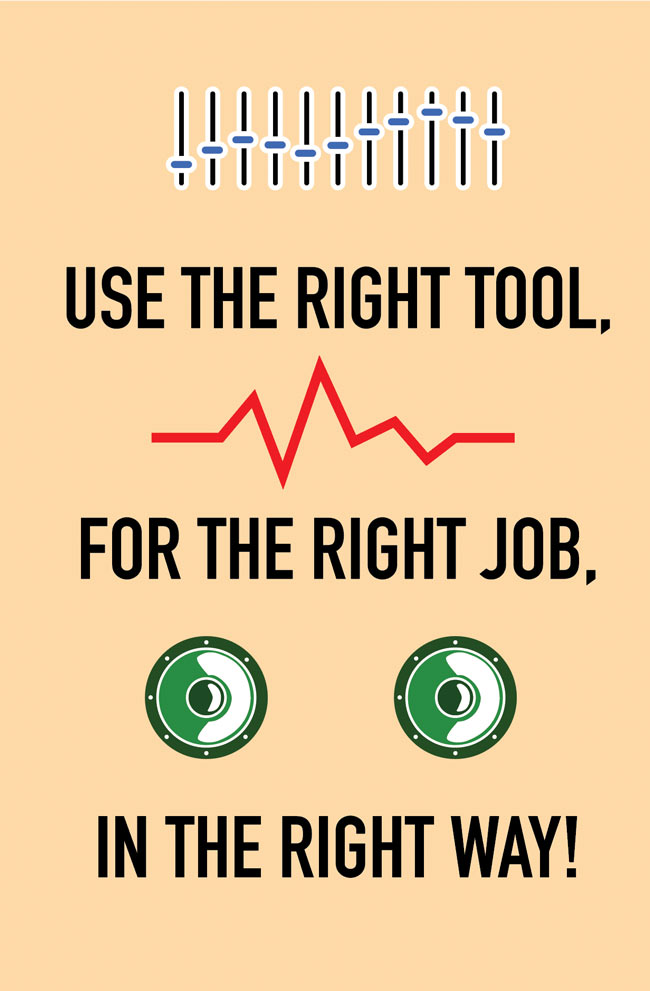
I will be discussing the various types of cables used in audiophile setups. I do believe and am willing to acknowledge that some specific types of cables in specific use cases can produce less than ideal results. The sound can be impacted by the cables. But digital cables used for S/P DIF (coax) and AES-EBU (balanced) connections and USB and Ethernet interconnects do not alter the bits they transfer in ways the alter the fidelity of the sound reproduced after the DAC. They just don’t. Any changes in the data packets due to errors would manifest as dropouts or digital “snats” not better microdynamic precision.”
Offering a 20% discount on Nordost cables, as their Australian distributor is doing for this promotion, means you’ll only be paying 75% too much. I’ve done “trialling” of cables, including digital and power cords. I compared the data transferred from a $200 USB cable to the output from my $1.50 Monoprice USB cable and they were identical. If the data output by each cable are identical, then the sound output from the DAC is identical too. Some things — especially in the digital realm — can be measured.
If you feel obligated or have a pressing need to purchase expensive cables, just do it for reasons other than their “enhanced” performance. Do it because they look cool or are the right color.
Finally…
I don’t mean to pick on these writers or the associated websites. They just happened to have risen above the din over the past couple of weeks. The myths attributed to cables and the constant barrage of inane reviews written by other reviewers on other websites is pervasive. The best advice I can give is to follow what the top end studios and mastering room do. They use professional commercial cables, standard power cords, analog patch bays, and supremely designed and engineered rooms. Skip the audiophile hype, glossy brochures, nonsensical reviews, and commit to never spending more than a couple of hundred dollars for any cable. Put your money elsewhere — where it might make a difference.
Back to School Special
Whether you’re headed back to classroom or will be studying online, schools and universities are gearing up for another year. In anticipation of the new semester, I’m offering a 30% discount on physical copies of the Music and Audio book. Now is the perfect time to read what has been called, “the gold standard” in audio reference books. Use coupon code “School30Percent” at check out.
Get the ULTRA HD-Audio 2017 AIX Records Sampler FREE
In addition to receiving the book, I’ll include a copy of the AIX Records 2017 HD-Audio Sampler for FREE. That’s a $25 value.

Streaming, Download, and Personal Audio – The New Book Is Coming
I’ve been spending a few of hours everyday writing the new book — A Users Guide to Streaming, Downloads, and Personal Audio. Please visit the COMING SOON page and sign up for special discounts and early notification of the Kickstarter campaign. I expect to launch the campaign in the next few weeks.

The iTrax-Sprint AIX Records Sampler Giveaway is Over!
Over 2000 people have downloaded the amazing sampler that I produced with Sprint years ago. Thanks to everyone for the kind comments and interest in our recordings. You can still get the album for around $10 at the iTrax.com website. Click here.
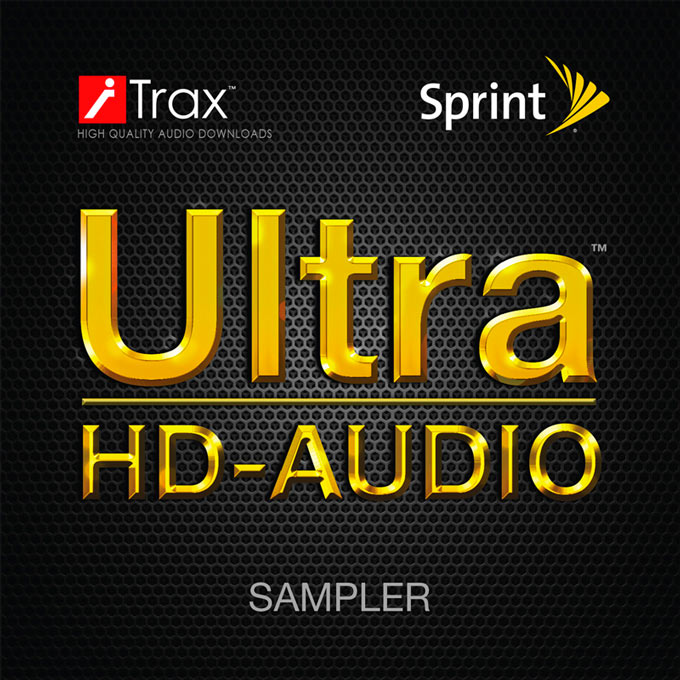

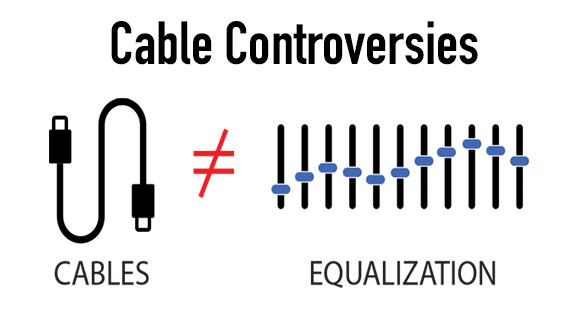
Hi Mark,
During this nasty covid lockdown I’ve had an opportunity to revisit some of my very best music. Hi res has become meaningless to me. I cannot possibly understand how on the ‘digital side’ cables can make any difference – they either work or they don’t. On the analogue side I can see how they may colour the sound in one way or another but this is ridiculous as you say there are plenty of better was to change the sound to your preference.
Great post!
It is so much work to push back against non-science based views, be it vaccines or cables.
There are a lot strange people in the audio hobby (well all hobbies I suppose), but I just find it so unethical of the companies creating outrageously overpriced gear that end up taking advantage of strange folks with bizarre or uninformed beliefs. They should be ashamed of themselves for “fleecing the rubes.”
Yes the free market will sort through these things in time but government regulation could be helpful to set measured standards for speaker and interconnect cables.
You feel like saying… “Real audiophiles don’t wear masks”
The ultimate solution will be when we can do away with cables and wires altogether. The technology is starting to trend in that direction. Those $11,000 cables might wind up on eBay for $1.99.
Another great post Mark, keep them coming.
Turns out I can’t see any comments on any post. What gives? Running Chrome on a Samsung tablet. It has worked fine for years…
Not sure. I use Chrome on a Mac and see them.
The cables have a sound, whether you hear it or not it depends on the resolution of your stereo.
But the biggest difference in sound is determined by the acoustics of your room. The interactions with your speakers will cause the biggest distortions, but not only distortions, you will have many cancellations, and you will lose frequencies, many small details in which instruments that accompany the sound play will be lost, even the 3d will undergo severe deformations that will be eaten the location of the instruments.
The acoustics of your room and interfacing with your speakers is the most important thing you need to take care of, and before that you need to choose the right speaker for your room, if you put a speaker with big woofers in a small room, you will never have good sound.
I don’t like the acoustic correctors with DSP, I can only accept them for big distortions but then if you have big distortions you have the wrong speaker.
The price of the cables is almost a scam, I can accept the cost of up to 10 ~ 20% of the cable of the value of each equipement or for long cable for speakers.
Spending thousands of Euros or dollars on cables to correct the sound of your stereo is crazy.
Cables change when you have good sound and want to put the icing on the cake.
First you fix the sound through the acoustics, when you are satisfied, only now you can change the cables And you will be able to judge if the high price is justified.
In my system, 4-way dipole speaker and electronic crossover, the value of the cables is a lot of cables! it does not even reach 5% of the value of the entire plant.
None of my friends have ever complained about my cables, they all listen with satisfaction, me too, and we enjoy the music.
I have a very “resolving” system. In fact, it is a mastering room used to prepare commercial album releases. I have good quality cables and have tried expensive cables…they sound the same. You’re right that the acoustics of your room are far more important. Wasting money on expensive power cords, interconnects, and speaker cables makes not sense. I have an analog patch bay in my studio. Most professional studios do. It’s uses tiny telephone patch points and cables. ALL the analog signals go through the gold plated ELCO connectors.
Hi there, here is a good one: https://www.audiosciencereview.com/forum/index.php?threads/audioquest-wind-high-end-cable-review.17065/
Hilarious.
AQ and SR never fail to fail…I saw that comment on Amir’s page. Perfect.
Here is what electrical engineers and physicists have known about the electrical properties of wires for nearly 150 years. The Telegrapher’s equations are derived from Maxwell’s laws. This is how the mainstream wire and cable industry sees it.
https://en.wikipedia.org/wiki/Telegrapher%27s_equations
Here is an example of how this lumped sum parameter equivalent of a distributed parameter filter network is used in practice. The demonstration starts at 5:38. Note that Gdx is omitted because it is assumed to be zero, that is by comparison to the other parameters the resistance between the two conductors is assumed to be infinite, an open circuit due to the insulation.
https://www.youtube.com/watch?v=O1LQ6r4n4mk
Anything your wires can do my equalizer can duplicate or undo and many other things as well. It is far less expensive, far more predictable, adjustable and unlike the audiophile wires buffering between the input, the equalization circuit, and output isolates it and therefore performance is independent of the source impedance and the load impedance. The amount of nonlinear distortion and noise even inexpensive equalizers create is negligible and inaudible. Audiophile wires are totally snake oil but it’s your money not mine. Where do I buy my wires from? Speaker Wire; The Home Depot. Interconnects; The Dollar Store now that Radio Shack is out of business. Power cords; whatever came with the equipment. BTW, if you want better shielding for interconnects run a bare wire of any gauge along its length, this wire is called a drain, and wrap the whole thing in aluminum foil. Try grounding it to the signal wire or ground pin at one or both ends. It is totally unnecessary for speaker wires as they are an awful antenna and at for too high a level to induced noise to be audible. NEVER try to shield power cords. This can cause a fire by trapping heat inside.